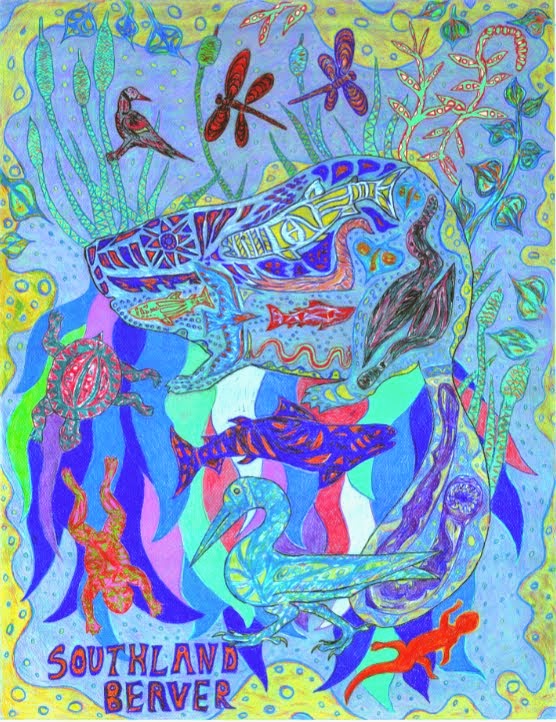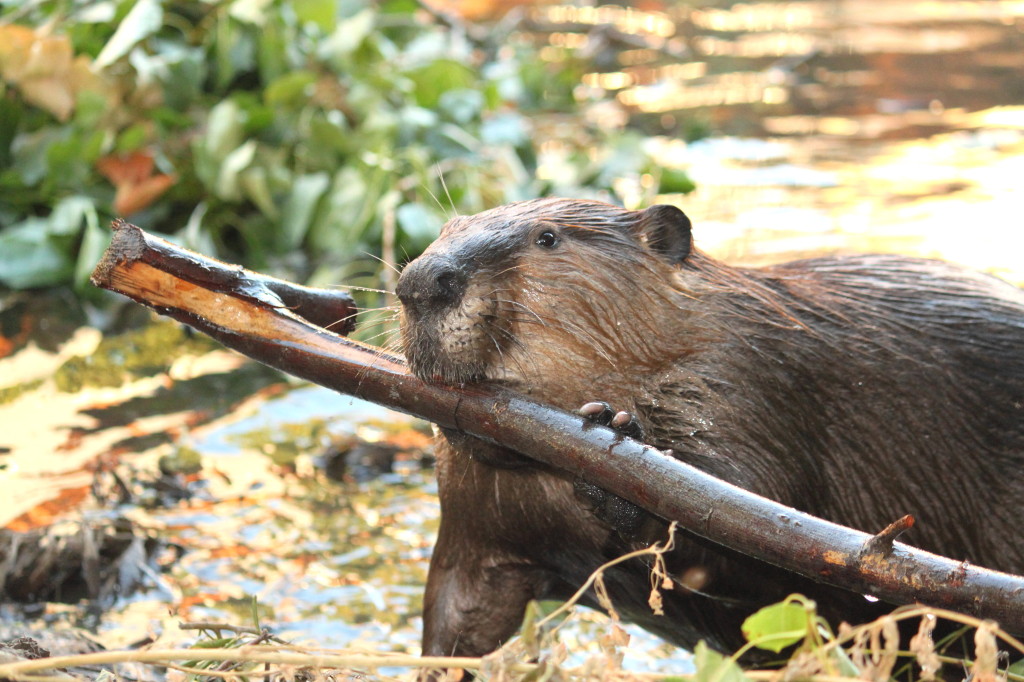Basically what the Cambridge researchers were looking at is the respective importance of organic debris versus algae in terms of fish health. Essentially zooplankton - which is more or less a catch all for various small to microscopic crustaceans, insects, worms, protists, and other invertebrate critters which collectively form the base of aquatic food chains i.e. fish food - can feed upon primary productive pathways or detrital pathways. In plain speak they can feed on water plants, usually algae, or also graze on the bacteria and fungi breaking down plant material - leaves, woody debris. In an elegant example of the scientific method the researchers were able to control both inputs by looking at watersheds with pristine, old growth forests (lots of organic debris) and watersheds bordering strip-mined and deforested landscapes. Furthermore by analyzing the carbon isotope signatures in fish taken from these waters the scientists were able to trace where the carbon came from because algal carbon is going to bear a different isotope than carbon derived from land plants (forest debris washed into the system).
While it has long been recognized that terrestrial organic input is an important factor in watershed and fish health, the study is alarming in addressing how important it is.
"We found fish that had almost 70% of their biomass made from carbon that came from trees and leaves instead of aquatic food chain sources," said Dr Andrew Tanentzap from Cambridge's Department of Plant Sciences, and lead author of the new study, published today in the journal Nature Communications.
Ok think about that for a second, 70% of their mass is derived from eating critters that fed off of stuff that was feeding off of dead land plants washed into the river.
"More than 60% of the world's fresh water is in the boreal areas such as Canada, Scandinavia and large parts of Siberia. These areas are suffering from human disturbance such as logging, mining, and forest fires resulting from climate change -- all occurrences predicted to intensify in coming years," said Tanentzap.
The scientists studied eight different 'watersheds' surrounding the lake: a given area across which all the moisture drains into a single stream. When these fast-moving streams -- full of detritus from forest foliage -- hit the slow-moving lake, the debris falls out of suspension and sinks, forming layers of sediment which create mini deltas.
Debris is broken down by bacteria, which is in turn consumed by zooplankton: tiny translucent creatures that also feed on algae. The fish then feed on the zooplankton. Until recently, algae were believed to be the only source of food for zooplankton, but the new research builds on previous work that showed they also feed on bacteria from forest matter drained into lakes.
The researchers worked along the food chains in the mini deltas. "Where you have more dissolved forest matter you have more bacteria, more bacteria equals more zooplankton; areas with the most zooplankton had the largest 'fattest' fish," said Tanentzap.
Going a little further the authors also suggest such importance of organic debris is important in all freshwater ecosystems from the poles to the tropics.
"While we've only studied boreal regions, these results are likely to bear out globally. Forest loss is damaging aquatic food chains of which many humans are a part."
Ok if you are like me you probably realized that it is easy to substitute beaver ponds for lakes and also substitute the active transport of organic matter by beaver into freshwater systems for the passive natural input. If you accept these intuitive substitutions it becomes logical to suggest beaver activity is bolstering aquatic food chains.
And here is your bonus google satellite view of beaver dams from Lundy Valley in the eastern Sierra.
I can't believe I never thought to look at beaver dams this way - the satellite views really let you see the large scale landscape transformation that beaver dams achieve!!
 |
| Lundy Valley beaver dams, the large dam to right is over 200 feet across!! Google Satellite (c) |
Andrew J. Tanentzap, Erik J. Szkokan-Emilson, Brian W. Kielstra, Michael T. Arts, Norman D. Yan, John M. Gunn. Forests fuel fish growth in freshwater deltas.Nature Communications, 2014; 5 DOI: 10.1038/ncomms5077
Support me on Patreon.
Like antediluvian salad on facebook.
Watch me on Deviantart @NashD1.Subscribe to my youtube channel Duane Nash.
My other blog antediluviansalad.blogspot









